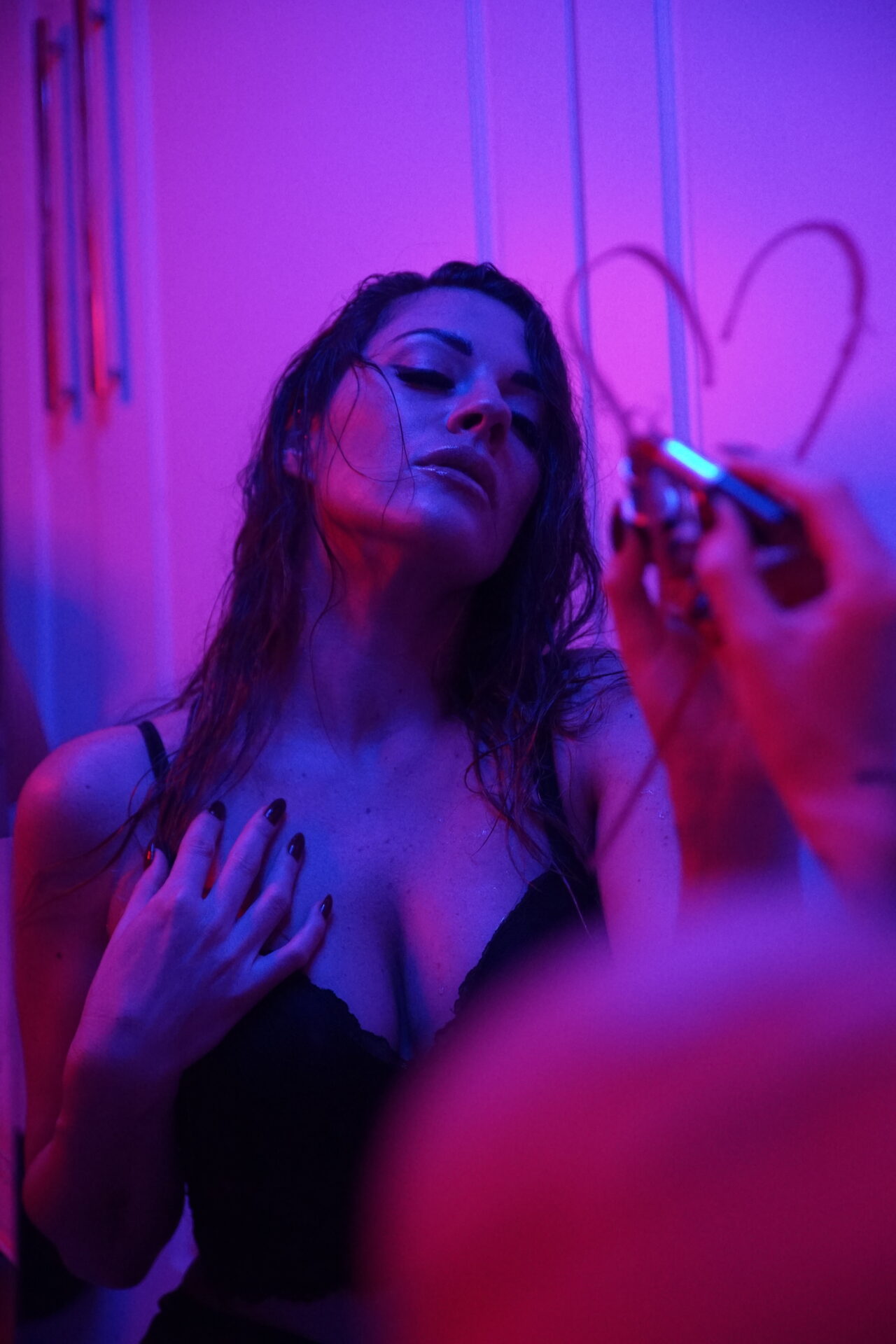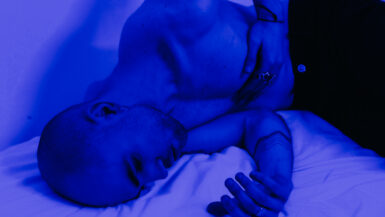In today’s fast-paced digital world, our eyes are constantly exposed to various sources of blue light, a high-energy visible light emitted by electronic devices such as smartphones, computers, and LED screens. Although blue light has its benefits, excessive exposure can lead to disrupted sleep patterns and decreased productivity. In this article, we will delve into the science behind blue light and its impact on our well-being, along with practical tips on how to protect your eyes from the harmful effects of blue light exposure. Join us as we explore effective strategies to ensure a balance between our digital lives and overall health.
Understanding Blue Light and Its Effects on Sleep
As we delve into the world of blue light and its impact on our sleep, it is essential to comprehend the properties of blue light and how they influence our natural sleep-wake cycle. In this section, we will discuss the connection between blue light exposure and sleep disturbances, as well as effective strategies for minimizing the negative effects of blue light on our rest.
The Science Behind Blue Light and Sleep Regulation
Blue light is a part of the visible light spectrum, characterized by its short wavelengths and high energy. This type of light has the ability to suppress melatonin production, a hormone responsible for regulating our sleep. During the day, exposure to natural blue light from sunlight helps maintain alertness and supports our circadian rhythm, which is our body’s internal clock that governs the sleep-wake cycle.
However, excessive exposure to artificial blue light from electronic devices in the evening can disrupt this rhythm, as our brains interpret it as daylight. This confusion leads to delayed sleep onset, reduced sleep quality, and ultimately, a negative impact on our overall health and productivity.
Signs of Sleep Disturbances Due to Blue Light Exposure
While it can be challenging to identify the exact cause of sleep problems, some common indicators of blue light-related sleep disturbances include:
– Difficulty falling asleep
– Frequent nighttime awakenings
– Waking up feeling unrested or groggy
– Insufficient deep sleep
– Daytime fatigue and reduced cognitive functions
If you notice these symptoms and suspect that excessive blue light exposure may be the culprit, consider taking proactive steps to reduce your exposure to blue light, particularly in the hours leading up to bedtime.
Creating a Blue Light-Free Evening Routine
One of the most effective ways to minimize the impact of blue light on your sleep is to establish a blue light-free evening routine. This involves reducing your exposure to blue light-emitting devices and creating a relaxing environment that promotes restful sleep. For a comprehensive guide on how to create a blue light-free evening routine, click here.
Some simple tips to include in your evening routine are:
– Limiting screen time an hour or two before bed
– Using blue light filtering apps or screen protectors on your devices
– Adjusting the color temperature of your screens to warmer tones
– Incorporating calming activities, such as reading a book, meditation, or taking a warm bath
By understanding the connection between blue light exposure and sleep disturbances, you can take the necessary steps to protect your eyes and improve your sleep quality. Remember, a good night’s sleep is essential for maintaining optimal health and productivity in our fast-paced digital world.
Best Blue Light Blocking Products for Better Sleep
In our quest to shield our eyes from the adverse effects of blue light exposure, a variety of innovative products have emerged in the market. These blue light blocking products are designed to filter out the harmful blue light emitted by our devices, reducing eye strain and promoting better sleep. In this section, we will explore some of the most effective blue light blocking products available, and provide valuable insights into how they can help improve your sleep quality and protect your eyes.
Blue Light Filtering Apps and Software
One of the most accessible and cost-effective ways to reduce blue light exposure is through the use of blue light filtering apps and software. These applications are designed to adjust the color temperature and brightness of your screens based on the time of day, reducing the amount of blue light emitted. Some popular blue light filtering apps include F.lux, Night Shift (iOS), and Night Light (Android).
Blue Light Blocking Glasses
Another practical solution to minimize blue light exposure is the use of blue light blocking glasses. These glasses are specifically designed with lenses that filter out a significant portion of blue light, reducing eye strain and helping to maintain a healthy sleep-wake cycle. Many reputable brands offer blue light blocking glasses, available in various styles and designs to suit your preferences.
Screen Protectors with Blue Light Filtering Technology
To protect your eyes without the need for additional eyewear, consider investing in screen protectors with built-in blue light filtering technology. These screen protectors attach directly to your devices, such as smartphones, tablets, and laptops, and reduce blue light emissions without compromising the quality of the display. This simple yet effective solution allows you to continue using your devices while minimizing harmful blue light exposure.
Blue Light Reducing Light Bulbs
As artificial lighting can also contribute to blue light exposure, consider replacing traditional light bulbs with blue light reducing light bulbs. These bulbs emit a warmer, more yellow light, which has a lower blue light content. By using these bulbs, especially in the evening, you can create a more sleep-friendly environment and support your natural sleep-wake cycle.
Creating a Sleep Sanctuary
In addition to using blue light blocking products, it is essential to create a sleep-friendly environment that encourages relaxation and restorative sleep. This includes maintaining a cool, dark, and quiet bedroom, as well as investing in comfortable bedding and pillows. By making these changes, you can further support your efforts to reduce blue light exposure and improve your overall sleep quality.
With the digital age showing no signs of slowing down, it is essential to take proactive steps to protect our eyes from the harmful effects of blue light exposure. By incorporating these blue light blocking products into your daily routine, you can safeguard your vision, support healthy sleep, and maintain optimal well-being in our tech-driven world.
Incorporating Healthy Eye Habits into Your Daily Routine
Aside from using blue light blocking products, it is crucial to incorporate healthy eye habits into your daily routine to minimize the impact of blue light exposure on your vision and overall well-being. In this subsection, we will explore various simple yet effective practices to protect your eyes from the harmful effects of blue light, ensuring optimal eye health and comfort.
Adopting the 20-20-20 Rule
One of the simplest and most effective strategies to reduce eye strain from digital devices is to follow the 20-20-20 rule. This guideline suggests that for every 20 minutes spent looking at a screen, you should take a 20-second break and focus on an object at least 20 feet away. This practice allows your eye muscles to relax and helps prevent digital eye strain, which is often associated with prolonged screen usage.
Optimizing Your Workspace for Eye Comfort
Creating an eye-friendly workspace is another essential aspect of maintaining good eye health in the digital age. This can be achieved by ensuring proper lighting, minimizing glare, and adjusting the position of your screens. Consider using adjustable desk lamps or ambient lighting to prevent harsh light from directly hitting your eyes, and position your screens at a comfortable distance and angle to minimize strain on your eyes and neck.
Adjusting Screen Brightness and Font Size
Another effective way to reduce eye strain is to adjust the brightness and font size of your devices. Ensure that the screen brightness is comfortable for your eyes and matches the lighting conditions in your surroundings. Additionally, increasing the font size can reduce the strain on your eyes when reading or working on your devices for extended periods.
Blinking Frequently and Practicing Eye Exercises
Blinking frequently is often overlooked but is a crucial habit to maintain optimal eye health. Blinking helps lubricate the eyes and prevents dryness and irritation. While using digital devices, we tend to blink less, so it is essential to make a conscious effort to blink more often. Additionally, practicing eye exercises, such as rolling your eyes or focusing on different distances, can help strengthen your eye muscles and maintain good eye health.
Regular Eye Check-ups and Consultations
Last but not least, it is vital to schedule regular eye check-ups with a qualified optometrist to monitor your eye health and detect any potential issues early on. This is especially important if you spend a significant amount of time using digital devices or have a family history of eye conditions. Your optometrist can provide personalized recommendations and guidance on how to better protect your eyes from blue light exposure.
By incorporating these healthy eye habits into your daily routine, you can effectively safeguard your eyes from the harmful effects of blue light exposure, improving your overall well-being and productivity in our increasingly digital world.
Tips for Reducing Blue Light Exposure at Night
As we strive to protect our eyes from blue light exposure, it is essential to focus on reducing this exposure during the evening hours when it has the most significant impact on our sleep and overall well-being. In this section, we will discuss several practical tips that you can adopt to minimize blue light exposure at night, allowing you to enjoy restful sleep and maintain optimal eye health.
Establish a Device-Free Bedtime Routine
One of the most effective ways to minimize blue light exposure at night is to create a device-free bedtime routine. This involves refraining from using electronic devices, such as smartphones, tablets, and laptops, at least an hour before bedtime. Instead, engage in calming activities, such as reading a physical book, practicing mindfulness meditation, or engaging in gentle stretching exercises. By establishing this routine, you not only reduce blue light exposure but also signal your body and mind that it is time to wind down and prepare for sleep.
Dim the Lights and Create a Sleep-Friendly Environment
The lighting conditions in your environment play a significant role in affecting your exposure to blue light. To minimize exposure at night, dim the lights in your home, especially in the bedroom. Consider using warm, ambient lighting or blue light reducing light bulbs to create a more sleep-friendly atmosphere. Additionally, ensure that your bedroom is cool, quiet, and free from distractions to promote restful sleep.
Activate Blue Light Filters on Your Devices
If you must use electronic devices at night, take advantage of built-in blue light filters or download third-party applications that reduce blue light emissions. These filters adjust the color temperature of your screens to a warmer hue, decreasing the amount of blue light emitted. Popular blue light filtering apps include F.lux, Night Shift (iOS), and Night Light (Android).
Invest in Blue Light Blocking Eyewear
Another helpful solution to reduce blue light exposure at night is to wear blue light blocking glasses. These glasses are designed with special lenses that filter out a significant portion of blue light, helping to protect your eyes and maintain your natural sleep-wake cycle. Many reputable brands offer stylish and effective blue light blocking glasses, making them a practical addition to your nightly routine.
Practice Mindful Screen Usage
Lastly, it is crucial to be mindful of your screen usage during the evening hours. Be conscious of the time spent on electronic devices, and prioritize tasks that do not require screens, such as engaging in conversations with family members, journaling, or pursuing a hobby. By being more intentional with your screen time, you can effectively reduce blue light exposure and support your overall well-being.
By adopting these practical tips, you can successfully minimize blue light exposure at night, ensuring a restful sleep while also protecting your eyes from potential harm. Remember, maintaining good eye health is essential for overall well-being and productivity in our increasingly digital world, so it is crucial to take these steps to safeguard your vision.
Adjusting Your Workspace for Optimal Productivity
Creating an eye-friendly workspace is essential in our digital world, as it not only protects your eyes from blue light exposure but also enhances your overall productivity. In this section, we will explore various strategies to optimize your workspace, ensuring that you can work efficiently while minimizing eye strain and the harmful effects of blue light exposure.
Position Your Screens at the Right Distance and Angle
One crucial aspect of creating an eye-friendly workspace is to position your screens at an appropriate distance and angle. Ensure that your screens are at least an arm’s length away from your eyes and slightly below eye level. This setup reduces eye strain and neck discomfort, allowing you to work more efficiently and comfortably.
Invest in Ergonomic Furniture and Accessories
Ergonomic furniture and accessories can greatly improve your workspace by promoting proper posture and reducing eye strain. Consider using adjustable chairs, desks, and monitor stands to ensure that your workspace is customized to your unique needs. Additionally, incorporating accessories such as wrist rests and footrests can further enhance your comfort while working.
Opt for Anti-Glare Screens and Monitor Filters
Glare from screens can contribute to eye strain and negatively impact your productivity. To combat this issue, invest in anti-glare screens or monitor filters that minimize glare and reflections. These products help to reduce eye strain and make it easier to focus on your work, leading to increased productivity.
Choose the Right Lighting for Your Workspace
Proper lighting is essential for both eye health and productivity. Opt for natural lighting whenever possible, as it provides the most comfortable light for your eyes. If natural light is not available or insufficient, use adjustable desk lamps or ambient light sources to prevent harsh light from directly hitting your eyes. Additionally, avoid placing your screens in front of a window, as the contrast between the bright light outdoors and the screen can cause eye strain.
Take Regular Breaks and Follow the 20-20-20 Rule
Taking regular breaks is vital for maintaining good eye health and productivity. Make a conscious effort to follow the 20-20-20 rule, which suggests taking a 20-second break every 20 minutes to look at an object at least 20 feet away. This practice helps to relax your eye muscles and prevent digital eye strain, allowing you to stay focused and efficient throughout the day.
Keep Your Screens Clean and Clutter-Free
A clean and clutter-free workspace can significantly impact your productivity and eye comfort. Dust and fingerprints on your screens can cause eye strain, as your eyes have to work harder to see through the dirt. Regularly clean your screens with a microfiber cloth and appropriate screen cleaning solution. Additionally, keep your workspace organized to minimize distractions and maintain a productive work environment.
By implementing these strategies, you can create a workspace that not only protects your eyes from blue light exposure but also enhances your overall productivity. A well-optimized workspace contributes to improved focus, comfort, and efficiency, allowing you to work smarter and maintain good eye health in our increasingly digital world.





Leave a reply